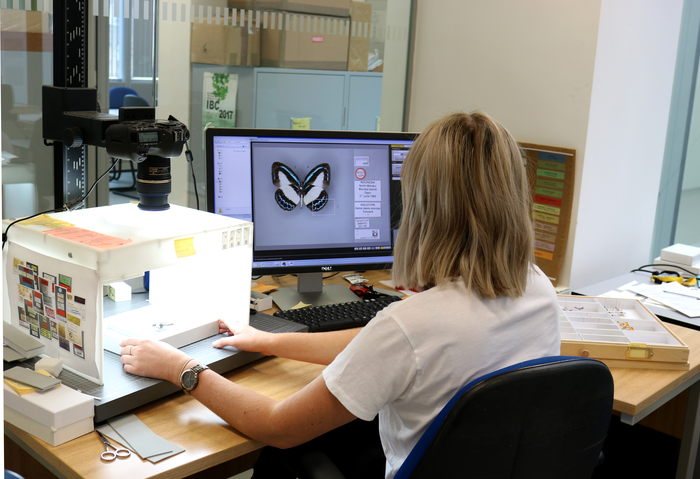
Recent advancements in biomedical technology are paving the way for innovative methods in the detection of critical health conditions, particularly in neonates. A notable breakthrough comes from a team led by Professor Jiang Changlong from the Institute of Solid State Physics at the Hefei Institutes of Physical Science, under the auspices of the Chinese Academy of Sciences. Their recent study introduces a dual-mode sensing platform that leverages the capabilities of upconversion nanoparticles (UCNPs) for the sensitive detection of bilirubin levels, a vital biomarker for diagnosing jaundice in newborns.
Jaundice is a significant concern in neonatal healthcare, affecting approximately 60% of newborn infants. It occurs when there is an accumulation of bilirubin, a yellow compound produced during the breakdown of red blood cells. Elevated bilirubin levels can lead to severe complications, including neurological damage, if not detected and treated promptly. Unfortunately, the conventional methods of bilirubin detection, often invasive and time-consuming, fail to provide the rapid and accurate results necessary for effective clinical responses. This raises a pressing demand for innovative techniques that merge sensitivity and convenience.
The novel sensing platform developed by Jiang’s team integrates both fluorescence and colorimetric detection methods, effectively enhancing the sensitivity of bilirubin detection within complex biological environments. The dual approach acts synergistically to reduce background noise, which is a common issue in traditional assay techniques. UCNPs, which convert near-infrared light into visible light, are particularly advantageous due to their reduced autofluorescence in biological specimens, leading to clearer signal clarity and improved detection accuracy.
One of the critical challenges with UCNPs has been their limited luminescence intensity, which can inhibit their efficacy in practical applications. To overcome this limitation, the researchers employed an innovative zinc ion doping strategy. This technique modulates the growth of upconversion nanocrystals, significantly boosting energy transfer efficiency. By enhancing the intrinsic properties of the nanoparticles, they produced a sensing platform capable of achieving impressive levels of upconversion luminescence, thereby enabling the detection of bilirubin at extremely low concentrations.
In this study, the researchers developed a 980 nm near-infrared excited upconversion visual sensing platform. This platform was specifically designed for the detection of bilirubin in serum samples. The integration of UCNPs with sulfosalicylic acid and iron ions forms a highly efficient upconversion nanoprobe that produces observable gradient changes in both fluorescence and colorimetric outputs upon interaction with bilirubin. This innovative mechanism allows for an accurate and rapid assessment of bilirubin levels, which is crucial for timely medical intervention.
To ensure accessibility and ease of use, the research team constructed a portable sensing device utilizing 3D printing technology. Coupled with the color recognition capabilities of modern smartphones, this device stands to revolutionize the way clinicians conduct bilirubin assessments in neonatal care. The shift towards a handheld, cost-effective solution promises not only to streamline diagnostics but also to foster an environment where immediate testing and intervention can occur, significantly improving patient outcomes.
The determination of the sensor’s efficacy in various biological matrices was rigorously outlined in the study. The fluorescence mode achieved a detection limit of 21.4 nM, illustrating the platform’s precision and capability of performing well under diverse conditions. This sensitivity is particularly important given that bilirubin levels in healthy infants typically range from 1.7 μM to 10.2 μM, necessitating detection technologies that can operate within such narrow parameters.
In addition to the technological advancements, the study underscores the importance of early diagnosis in combating jaundice. With neonatal jaundice being a critically time-sensitive condition, the ability to promptly and accurately detect elevated bilirubin levels can greatly decrease the risk of adverse health outcomes. This study highlights the potential to integrate cutting-edge nanotechnology into the realm of clinical diagnostics, ultimately transforming the landscape of pediatric care.
The research findings have been documented in the esteemed journal Analytical Chemistry, providing a significant contribution to the ongoing discourse surrounding innovative biomedical solutions. Within the publication, the researchers elaborate on their methodologies, findings, and the substantial implications of their work on early disease detection. As the world of medical diagnostics evolves, this pioneering work serves as a reminder of the incredible potential encapsulated within interdisciplinary collaboration and innovative thinking.
Moving forward, the emphasis on creating user-friendly diagnostic tools will remain paramount. As health organizations continue to prioritize accessibility, the mobilization of such technologies into real-world applications will be critical. This will not only enhance the capabilities of healthcare providers but will also foster greater patient engagement and empowerment, allowing families to be an active part of monitoring their infants’ health.
In conclusion, the work conducted by Professor Jiang Changlong and his colleagues offers a glimpse into the future of neonatal care, where early detection and intervention are facilitated by advanced sensing technologies. As these methodologies gain traction in clinical contexts, the hope is that they will lead to a decline in the prevalence of serious complications related to neonatal jaundice, ultimately safeguarding the health and well-being of infants worldwide.
Subject of Research: Dual-mode sensing platform for bilirubin detection in neonates
Article Title: Zinc Doping-Induced Lattice Growth Regulation for Enhanced Upconversion Emission in Serum Bilirubin Detection
News Publication Date: 4-Feb-2025
Web References: DOI Link
References: Analytical Chemistry, Volume X, Page Y
Image Credits: Credit: ZHANG Lanpeng
Keywords
Bilirubin detection, upconversion nanoparticles, neonatal jaundice, fluorescence sensing, biomedical technology, 3D printing, clinical diagnostics.
Tags: advancements in biomedical technologybilirubin level monitoringdual-mode sensing platformsinnovative neonatal care solutionsnanotechnology in medicineneonatal healthcare innovationsneonatal jaundice detectionnon-invasive jaundice testingProfessor Jiang Changlong researchrapid bilirubin detection methodssmartphone technology in healthcareupconversion nanoparticles for diagnostics





